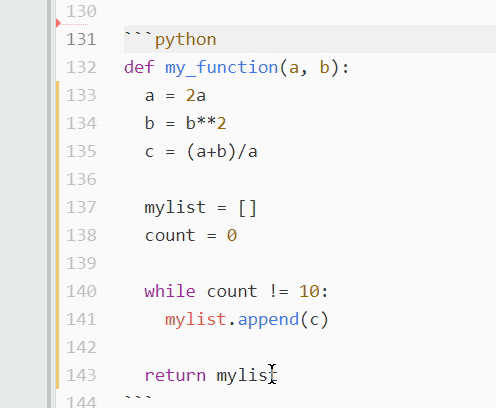How to comment code Python
How to comment code Python

Commenting Code in Python: A Comprehensive Guide
When coding in Python, commenting your code is essential for several reasons:
Code readability: Comments help others (and yourself) understand the purpose and logic behind the code. Debugging ease: By adding relevant comments, you can quickly identify and debug issues within your code. Collaboration and knowledge sharing: Comments facilitate collaboration with team members and make it easier to share knowledge.There are several ways to comment code in Python:
Line comments: Begin a line with the# symbol followed by the comment. For example:
# This is a single-line comment
"""
This is a block comment that spans multiple lines
"""
Docstrings: Docstrings are used to provide detailed descriptions of functions, classes, and modules. They should start with a triple quote ( def my_function():
"""
This is a docstring for a function
"""
return "Hello, World!"
-> operator.
def my_function(name: str) -> str:
pass
Best Practices for Commenting Code
Keep it concise: Keep your comments brief and to the point. Use clear language: Avoid using technical jargon or overly complex terminology in your comments. Be consistent: Use a consistent commenting style throughout your codebase to maintain readability. Focus on high-level concepts: Instead of explaining every detail, focus on providing an overview of what the code does and how it works. Use meaningful names: Choose variable and function names that are self-explanatory, reducing the need for comments. Document edge cases: If your code handles specific edge cases or error scenarios, document them to ensure easy debugging.Common Commenting Mistakes to Avoid
Overcommenting: Don't comment every line of code; instead, focus on the logic and high-level concepts. Undercommenting: Make sure you're not neglecting to provide important context or explanations for complex code sections. Irrelevant comments: Remove any comments that are no longer relevant or redundant.By following these guidelines and best practices, you'll be able to effectively comment your Python code, making it easier for yourself and others to understand and maintain.
How do I turn off a code in Python?
I'd be happy to help!
Turning off a code in Python can be a bit tricky, as it depends on the type of code you're working with. Here are some common scenarios:
1. Stopping a script or program
When you run a Python script, it will execute line by line until it reaches the end of the file or encounters an exit() statement. To stop a running script, you can use:
Ctrl+C): This will raise a KeyboardInterrupt exception, which you can catch and handle if needed.
try:
Your code here
except KeyboardInterrupt:
print("Script stopped!")
os._exit() function: This will terminate the script immediately without executing any cleanup code.
import os
Your code here
os._exit(0) # Exit with status code 0 (success)
2. Stopping a while loop or infinite loop
If you have a loop that's running indefinitely, you can use:
Thebreak statement: This will exit the loop immediately.
while True:
Loop body here
if some_condition:
break # Exit the loop
exit() function: This will terminate the script immediately without executing any cleanup code.
import sys
while True:
Loop body here
if some_condition:
exit() # Exit the script
3. Stopping a thread or process
If you're working with multiple threads or processes in Python, you can use:
Thethreading.Thread().stop() method: This will stop the thread immediately.
import threading
my_thread = threading.Thread(target=my_function)
my_thread.start()
Later, if needed:
my_thread.stop() # Stop the thread
Process().terminate() method: This will terminate the process immediately without executing any cleanup code.
import multiprocessing
my_process = multiprocessing.Process(target=my_function)
my_process.start()
Later, if needed:
my_process.terminate() # Terminate the process
In summary, you can turn off a Python code by:
Stopping a script or program withCtrl+C, os._exit(), or exit() Exiting a loop with break or exit() Stopping a thread or process with stop() or terminate()
Remember to always handle exceptions and errors in your code, as they can help you debug and improve the robustness of your programs.
I hope this helps! Let me know if you have any further questions.





























